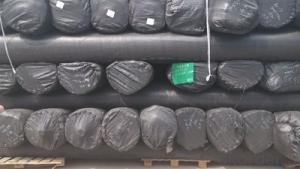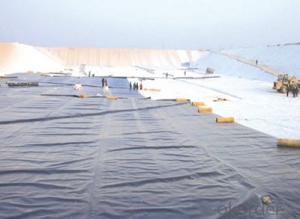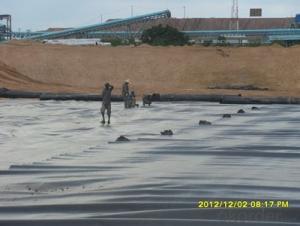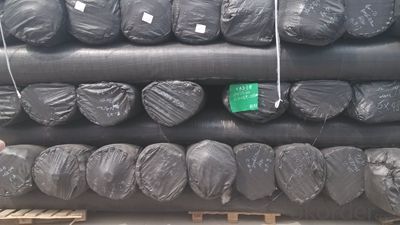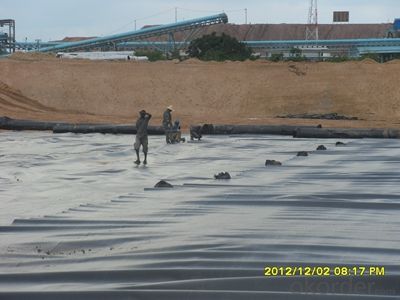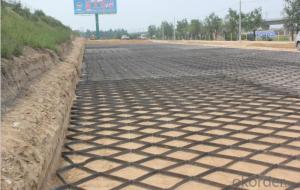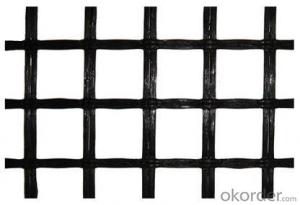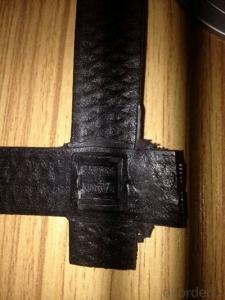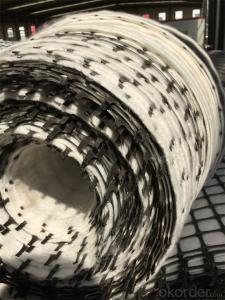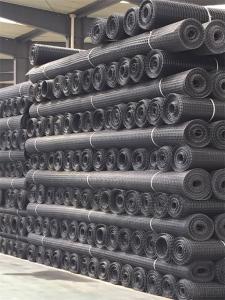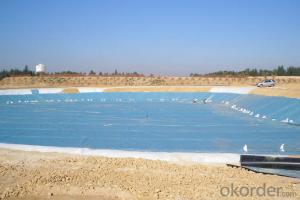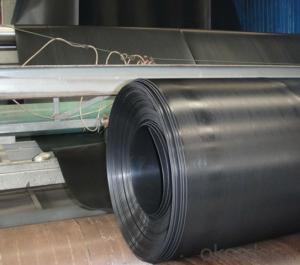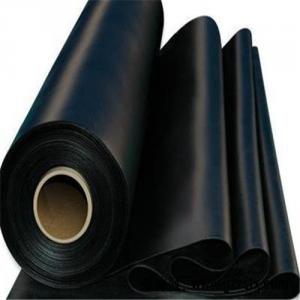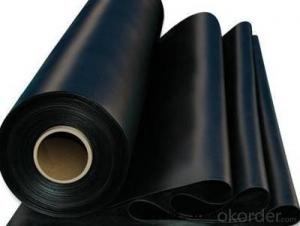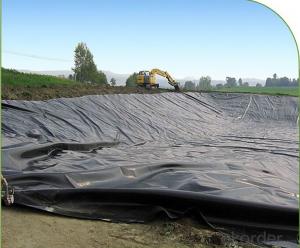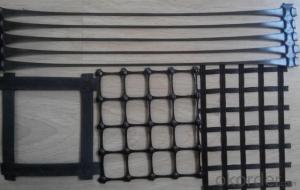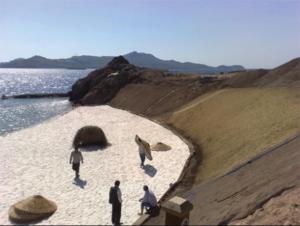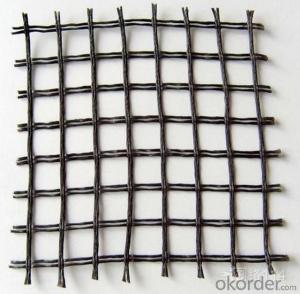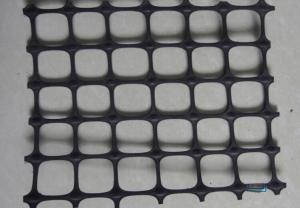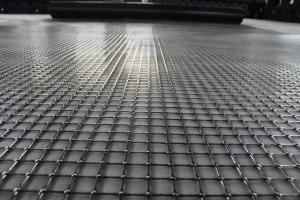HPA Geocells LLDPE Geomembrane for Environmental, Water Conservancy, and Landfill Projects
- Loading Port:
- Tianjin
- Payment Terms:
- TT OR LC
- Min Order Qty:
- 88 m²
- Supply Capability:
- 1800000 m²/month
OKorder Service Pledge
OKorder Financial Service
You Might Also Like
Introduction of CNBM
China National Building Materials (Group) Corporation (CNBM) is a state-owned enterprise in charge of administrative affairs in China building materials industry. Established in 1984, CNBM is a large group corporation of building materials with total assets of RMB 25 billion and a total staff of 30,000. Now CNBM owns more than 200 subsidiaries in and abroad the country, including wholly-owned corporations and joint ventures.
FAQ of geosynthetics :
What is geosynthetics ?
Geosynthetics form a perfect erosion control fabric used extremely widely in civil engineering to stabilize and reinforce slopes and soil under or next to roads, railways, dams, water reservoirs etc.. They can be easily applied which minimizes the time of construction, as well as they limit the resources and materials necessary.
What kinds of geosynthetics we have ?
Non-woven geotextile, geogrids, geocells, GCL, Geomembranes, Geonets, Geocomposites etc .
What is the geosynthetics used for ?
Hydraulic
Lagooning and Water Treatment, Ornamental Ponds, Golf Courses
Aquaculture and Desalination,Water Lagoons,Tanks, Reservoirs, Liquid Waste,Floating Cover Solutions, Drainage and Filtration
Environment
Tailing ponds, Leach mining,Landfills,Landfill Capping,Protection against corrosion,Vertical Barriers
Civil Works
Erosion Control,Secondary Containment,Tunnels,Linear and Surface Works,Consolidation of Margins,Soil Reinforcement,Soil Separation.
Building - Parkings,Roofing,Soundproofing
The description of HDPE Geomembrane for Environmental Projects water conservancy projects landfill mining canal
Geomembranes are impermeable geosynthetics that, until recently, were mainly used as canal and pond liners. However, modern technology has broadened liner applications to include landfills, wastewater treatment lagoons, oil and gas exploration (including hydraulic fracturing or "fracking"), aquaculture, irrigation ponds and remediation. In many of these applications, a nonwoven geotextile is used as a cushion to protect the geomembrane. In general, geomembrane liners offer excellent puncture resistance and can withstand a wide range of chemicals and temperatures. They are also highly flexible and conform well to the subgrade.
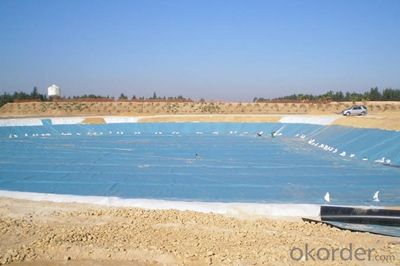
The description of LLDPE Geomembrane for Environmental Projects water conservancy projects landfill mining canal
Geomembranes are impermeable geosynthetics that, until recently, were mainly used as canal and pond liners. However, modern technology has broadened liner applications to include landfills, wastewater treatment lagoons, oil and gas exploration (including hydraulic fracturing or "fracking"), aquaculture, irrigation ponds and remediation. In many of these applications, a nonwoven geotextile is used as a cushion to protect the geomembrane. In general, geomembrane liners offer excellent puncture resistance and can withstand a wide range of chemicals and temperatures. They are also highly flexible and conform well to the subgrade.
Specification of LLDPE Geomembrane for Environmental Projects water conservancy projects landfill mining canal:
I. Thickness: 0.3mm-3. 0mm
2.4m-9m in roll width, the length as client ' s request
Features or Property of LLDPE Geomembrane for Environmental Projects water conservancy projects landfill mining canal:
I. Good flexibility
2. For service temperature range: -700C-+1IOoC
3. Corrosion resistance, aging resistance
4. Excellent environmental stress cracking resistance property
5. High tensile strength and elongation
Application of LLDPE Geomembrane for Environmental Projects water conservancy projects landfill mining canal:
I. Municipal environmental projects, water conservancy projects
2. Landfill cap(closures), mining heap leach pads
3. Pond liner, canal linings, tank linings, raw water treatment reservoirs, retention ponds
4. Waste water treatment lagoon, secondary containment
Production standard:
I. GB/T17643-2011
2. CJ/T276-20083. GRI-GM17
- Q: What is the recommended geogrid aperture shape for specific applications?
- The recommended geogrid aperture shape for specific applications varies depending on the specific requirements of the project. However, commonly used shapes include square, rectangular, and hexagonal apertures. These shapes provide different levels of stability, soil confinement, and load distribution, allowing engineers to select the most suitable option based on factors such as soil type, slope angle, and anticipated loads.
- Q: What are the differences between geogrids and geopipes?
- Geogrids and geopipes are both geosynthetic materials used in civil engineering and construction projects, but they serve different purposes. Geogrids are typically made of high-strength polymers or metals and are used to reinforce soil, providing stability and enhancing load-bearing capacity. They are commonly used in applications such as retaining walls, slope stabilization, and road and pavement construction. Geogrids have an open structure with interlocking apertures, allowing soil particles to interlock with the material, creating a strong composite. On the other hand, geopipes are typically made of high-density polyethylene (HDPE) and are used for subsurface drainage and water management systems. They have a perforated or slotted design that allows for the efficient collection and transportation of excess water from the soil. Geopipes are commonly used in applications such as underdrains, French drains, and stormwater management systems. In summary, geogrids are used for soil reinforcement and stability, while geopipes are used for subsurface drainage and water management.
- Q: What does the geotextile 200# mean?
- Geotextile is made of synthetic fiber by acupuncture or woven into a permeable geosynthetic material. The finished product is cloth, the general width of 4-6 meters, the length of 50-100 metersGeneral specifications from the arbitrary choice between 80g/ square meters ~800g/ square metersOf course, the high requirements of the occasion, there is a high weight of Geotextile
- Q: How do geogrids help in reducing soil compaction?
- Geogrids help in reducing soil compaction by providing reinforcement and support to the soil structure. They distribute the load more evenly, reducing the pressure on the soil particles and preventing excessive compaction. This helps to maintain the soil's porosity, allowing for better water infiltration and root growth. Additionally, geogrids can improve the stability of the soil, preventing it from settling and compacting under heavy loads.
- Q: Glass fiber grille material.
- Glass fiber grille is made of glass fiber
- Q: Do geogrids provide reinforcement to geosynthetic clay liners in waste containment facilities?
- Yes, geogrids are commonly used to provide reinforcement to geosynthetic clay liners in waste containment facilities. They enhance the stability and strength of the liners, preventing them from tearing or shifting under heavy loads, and improving overall containment system performance.
- Q: Do geogrids affect groundwater flow?
- No, geogrids do not affect groundwater flow.
- Q: Can geogrids be used in reinforcement of bridge approach embankments over soft soils?
- Yes, geogrids can be used in the reinforcement of bridge approach embankments over soft soils. Geogrids are commonly used to improve the stability and strength of soil structures, including embankments, by providing reinforcement and reducing deformation. By distributing loads and increasing soil bearing capacity, geogrids can effectively mitigate settlement and prevent failure in bridge approach embankments built on soft soils.
- Q: Can geogrids be used in temporary construction haul roads for mining applications?
- Yes, geogrids can be used in temporary construction haul roads for mining applications. Geogrids are commonly used in such scenarios to reinforce the road base, improve stability, and prevent soil erosion. They provide increased load-bearing capacity, reduce rutting, and can withstand heavy vehicle traffic, making them an ideal solution for temporary haul roads in mining operations.
- Q: Sampling method of Geogrid
- Specification for "GB/T17689-2008" (plastic geogrid) group is defined as: the same batch of raw materials, the same formula and the same under the condition of the technology of production of the same specifications of plastic geogrid as a group, each batch number shall not be more than 500 volumes, production of 7D is still less than 500 volume with the yield of 7D for a number of
Send your message to us
HPA Geocells LLDPE Geomembrane for Environmental, Water Conservancy, and Landfill Projects
- Loading Port:
- Tianjin
- Payment Terms:
- TT OR LC
- Min Order Qty:
- 88 m²
- Supply Capability:
- 1800000 m²/month
OKorder Service Pledge
OKorder Financial Service
Similar products
Hot products
Hot Searches
Related keywords
